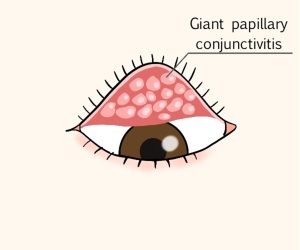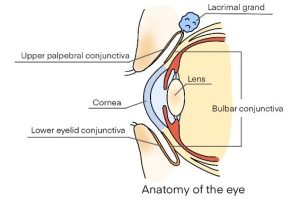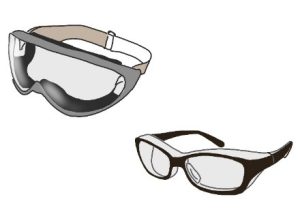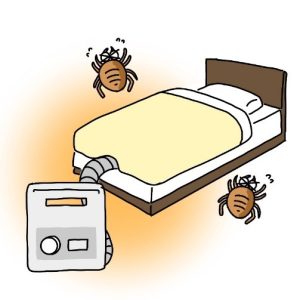Allergic conjunctivitis can be classified into several types depending on the allergen and the symptoms.
Hay fever
Allergies caused by pollen lead to conjunctivitis. Cedar (spring), weeds from the grass family (summer), and ragweed (fall) are well-known examples, but in fact, pollen of all kinds is flying all year round except during the winter season.
In particular, pollen from trees such as cedar and cypress is known to be carried by the wind for distances of more than 100 kilometers.
Pollen allergy is caused by the body overreacting and releasing chemical messengers such as histamine. In addition to various symptoms that appear in the eyes, nasal symptoms such as sneezing, runny nose, and nasal congestion are often associated.
| Plant name |
Pollen dispersal period |
| Alder |
From early February to the end of June |
| Japanese cedar |
Late January to early May |
| Cupressaceae |
Mid-March to late May |
| Birch |
Late April to early June |
| Poaceae |
From early April to late November |
| Ragweed |
Early August to mid-October |
| Artemisia |
Mid-August to mid-October |
| Humulus japonicus |
Mid-August to late October |
*Edited by our company based on the guidelines for nasal allergy treatment (Japanese Society of Otorhinolaryngology, Immunology and Allergy and Infectious Diseases).
House Dust
House dust refers to tiny particles of dirt that are barely visible to the naked eye, such as dust mites, mite corpses and excrement, human dandruff, hair, and mold mixed in with the dust.
Conjunctivitis occurs when airborne house dust particles adhere to the conjunctiva, just like pollen. The symptoms of conjunctivitis are similar to those of hay fever. However, unlike seasonal hay fever, conjunctivitis is a chronic condition that continues all year round. This is because house dust particles are always around us.
Therefore, it is important to remove antigens through environmental improvements such as cleaning, removing mites, and ventilation.
Vernal Keratoconjunctivitis
Vernal keratoconjunctivitis is a chronic, severe allergic conjunctivitis that occurs primarily in prepubertal boys, and is an inflammatory disease of the cornea and conjunctiva. It is now associated with atopic dermatitis and can cause severe symptoms even in people in their 20s.
The eyes become extremely itchy, and numerous small scratches appear on the surface of the cornea, causing intense itching, roughness, and sensitivity to light. In addition, a papilla shaped like a stone may appear on the upper eyelid, and a white cloudy layer may appear on the cornea. As the condition progresses, the epithelium of the cloudy area may peel off, leading to a corneal ulcer.
Giant papillary conjunctivitis

Giant papillary conjunctivitis is a condition in which numerous papillae develop and become inflamed behind the upper eyelid. An allergic reaction to proteins in dirty contact lenses can also cause this condition.
This condition is characterized by a foreign body sensation, blurred vision, eye discharge, and in severe cases, a tendency for the contact lens to slip upwards.
Atopic Keratoconjunctivitis
Conjunctivitis occurs in people with skin lesions on the face and eyelids caused by atopic dermatitis, causing chronic year-round itching and eye discharge.






